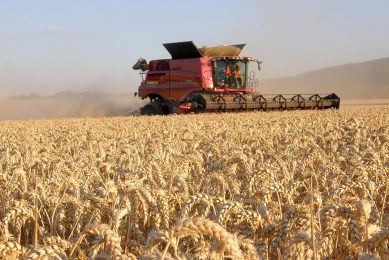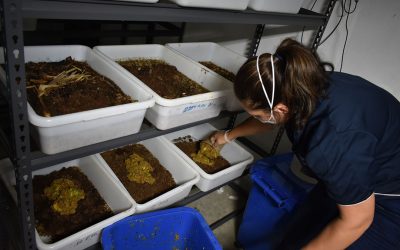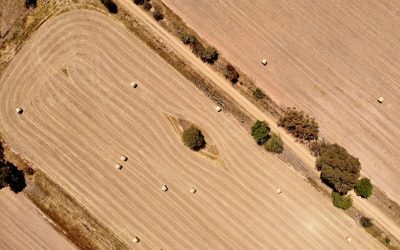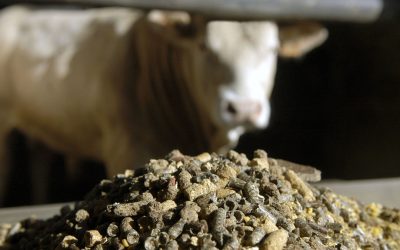Generating steam entails more than just “putting on the kettle” (1)
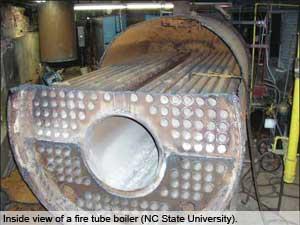
It is often said that pelleting is an art that requires technical skills. Easily manipulated processing variables include steam pressure and conditioning temperature; the pressures and temperatures utilised for steam conditioning. Robert Veenendaal focuses on advising on steam generation in plants. He shares some of his experience with AllAboutFeed.
Ask 10 feed plant operators how they use steam in the conditioning and pelleting process and you will get 10 different answers. The process of making steam entails much more than just boiling water. Take the boiler as an example. There are several types of steam boilers, like Water Tube, Fire Tube and Tubeless Boilers or Steam Generators. These are each divided into 2-pass, 3-pass and 4-pass boilers, and to make it more complicated we have wet back and dry back boilers.
The most important factors to consider are the heat surface and the water surface areas where steam is produced. Water tube boilers have a relatively small heat surface area, where water is heated up in the tube. Here, the flame surrounds the tubes, whereas with fire tube boilers the flame or hot air flows through the tubes and the water surrounds the tubes.
When we start up a water tube boiler, we can raise steam in a very short period because the volume of water that has to be heated is much smaller than by a fire tube boiler. A fire tube boiler produces dryer steam by a high load, and is more efficient in burning fuel.
Wet and dry back
What are the differences in wet and dry back boilers? In the front of the boiler is a burner where the flame is forced to the rear and reversed. When the flame is reversed at the rear door of the boiler it is a dry back. When there is a combustion-reversing chamber there will be water behind the chamber. This is called a wet back boiler and is more economical.
Design aspects have a big influence with regards to 2-, 3- and 4-pass boilers. The most common are the 3-pass boiler, in which the hot air passes three times. The first pass will be the furnace tube, the second is from the combustion-reversing chamber to the front, and the third pass is to the back out the chimney. Nearly 50% of steam is produced by the furnace tube; about 30% by pass No. 2 and 15% by pass No. 3. The 4-pass boilers entered the market as a sales point, and were more economical. But it is better to increase the number of boiler tubes in pass No. 2 and No. 3 than to create a fourth pass with an estimated steam production of only 5%.
The best type of boiler for pelleting is a Fire Tube, 3-Pass Wet Back boiler with an average of 20 m2heat surface area per 1,000 kg of steam output.
Output capacity
What about the ideal size or output capacity of the boiler? Always calculate 5% as steam absorption. It is not said that this is what you will use, but is a good starting point for calculation purposes. If the feed output is 20 t/hr then we calculate a steam usage of 1,000 kg. Steam dryness will change when the boiler load passes 80% of steam output, which indicates that the higher the boiler load (output), is the lower and/or wetter steam dryness will become. To be able to produce 1,000 kg of steam, the minimum size of the boiler should be 1,250 kg/hr.
The boiler output capacity given by the boiler manufacturers is by a maximum operation pressure and a feed water temperature of 100SDgrC or 102SDgrC. This implies that if the boiler feed water temperature is 80SDgrC and the boiler operating pressure is 8.5 Bar (Max 10.0 Bar) then the boiler can never produce the steam capacity given. We should then have a boiler output of a minimum of 1,500 kg/hr.
Pump control
There are two types of pump control systems: a continuous feed, and a start-stop type. The continuous feed system has a stable water level and does not fluctuate. Also, the steam space is stable. By a start-stop system, the water level and steam space fluctuate. Steam space is the smallest and water level at the highest level when the feed pump stops. Also the pump should stop about 2/3 of the level indicator, the pump should start within a drop of 2.5-3 cm. When the pump starts by a drop of 5 cm a lot of water is pumped into the boiler and will result in a drop in pressure. To keep the steam space as big as possible, we should pump small quantities of water into the boiler.Total Dissolved Solids (TDS) control through blow-down is a very serious issue. Steam leaves the boiler, which is pure water. All impurities will stay behind in the boiler and TDS levels will increase. This should be controlledwithin a range of 2,500-3,000 ppm. When TDS levels reach 4,000-5,000 ppm, carry-over arises and impurities will travel with the steam to create wet steam. Also, scale will build up in the boiler and heat transfer will not be optimal, stack temperatures will rise and efficiency will decrease.
The only way to control TDS in the boiler is through blow-down. There are no chemicals to reduce TDS; moreover, nearly all chemical internal treatment will increase the TDS levels and the blow-down rate.
Blow-down rate
The blow-down rate is the calculation (percentage) of steam produced that is blown off to stay within the TDS limits. For example: Feed water TDS 450 ppm (Control TDS 2,500 ppm – Feed water TDS 450 ppm) x 100 = 20.9% of the boiler output is blown off. It is so important to reduce TDS levels of feed water through the use of condensate return or even reverse osmosis, a membrane filter system that is able to produce water with a TDS level of only 10-15 ppm, which will reduce the blow-down rate to only 0.6%. Fuel prices vary throughout the world, but cost savings will start here. When money is invested for the conditioning of feed water it will receive a very quick return of investment.
Chemicals will not reduce TDS, but all boilers need chemical treatment depending a lot on the water quality of the feed water. Main treatment is sodium sulphate for oxygen scavenging and sodium phosphate as a pH builder. There are also filming agents, sludge conditioners, etc., but most common are the two mentioned. Dosing is between 30-50 ppm, but should be adjusted when evaluating the results of water analysis. The pH levels of boiler water should be 10.5–11.5 and for oxygen demand we should measure a level of 0.4 ppm – not zero because then we cannot see how much we overdose. For pH levels we should keep it at 11.0.Chemicals are expensive and overdosing is not good for the boiler or the environment. Also, if control levels are not maintained we end up with scale in the boiler, dosing chemicals or not.
Feed water conditioning
When conditioning boiler feed water always try to improve feed water quality, condensate return in the feed industry is only a little and the main condensate comes from the heating systems of palm oil, styrene, tallow and/or molasses. First of all it lowers TDS levels, but also flash steam will increase feed water temperatures up to 80-85ºC. Steam injection is only good if a de-gasifier has been installed. This, however, is not very economical.
Further softening systems are usually installed to reduce calcium and mag-nesium with a Cation of Fe-Resin. Silica can be a big problem, and to reduce it we need an Anion resin. Calcium, magnesium and silica are scale builders and will lower efficiency and stack temperatures will increase. High stack temperatures are an indication of in-efficient operation of the boiler. High levels of calcium, magnesium and silicate can be controlled through blow-down, but it is costly.
Step and modulating burners
Burners can be divided in step and full modulating controlled burners. The step burners usually fire on Low and High Fire (2-step) or a Low, Middle and High Fire (3-step) position, while a full modulated system can change very small load increases to keep the pressure stable. Fully modulated burners are more difficult to adjust than step burners because of the number of positions. Usual modulated burners are set per 10% load, while 2-step burners only burn low and high fire equivalent 35% and 85% of the maximum output capacity. Also, for efficiency purposes, modulated burners are more economical and have a higher Turn-Down Ratio. This means that boilers with a high TDR can handle small loads better. A step burner has a TDR of 3, meaning the minimum load of the boiler is 33% of the total steam capacity and will start/stop all the time, while a full modulated boiler’s TDR is often 5–6 equivalent to 20–16.5%, respectively, of the maximum steam capacity.
Part 2 of this article can be found here, where fuel, combustion and pressure setting will be discussed.




